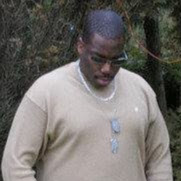Jeffrey H Townsend
age ~71
from San Luis Obispo, CA
- Also known as:
-
- Jeffrey Hugh Townsend
- Jeffrey R Townsend
- Jeff H Townsend
- Jeffery H Townsend
- Jeff Townfend
- Jeff D
- Phone and address:
- 6150 Alta Mira Ln, San Luis Obispo, CA 93401
Jeffrey Townsend Phones & Addresses
- 6150 Alta Mira Ln, Sn Luis Obisp, CA 93401
- San Luis Obispo, CA
- Atascadero, CA
- Tempe, AZ
- Bakersfield, CA
- 428 Indio Dr, Pismo Beach, CA 93449 • (661)9006364
- Kalamazoo, MI
Work
-
Company:Morgan, Lewis & Bockius LLP
-
Address:
Specialities
eData
License Records
Jeffrey A. Townsend
License #:
1446 - Expired
Category:
Landscape Architect
Issued Date:
Sep 25, 1986
Expiration Date:
Feb 28, 2011
Organization:
Firm Not Published
Lawyers & Attorneys

Jeffrey Townsend - Lawyer
view sourceOffice:
Morgan, Lewis & Bockius LLP
Specialties:
eData
ISLN:
922328153
Admitted:
2003
University:
Bucknell University, B.S., 2000
Law School:
University of Virginia School of Law, J.D., 2003
Name / Title
Company / Classification
Phones & Addresses
Rosedale Farming Group, L.P
5001 E Commercenter Dr, Bakersfield, CA 93309
Cabo Nuts LLC
1209 Hanover Pl, San Luis Obispo, CA 93401
TOWNSEND INVESTMENTS, LLC
President
TOWNSEND INDUSTRIES, INC
4615 Shepard St, Bakersfield, CA 93313
President
TOTALLY STABLE BUSINESS INC
4615 Shepard St, Bakersfield, CA 93313
250 El Cerrito, Bakersfield, CA 93305
250 El Cerrito, Bakersfield, CA 93305
Us Patents
-
Orthopedic Knee Brace Having An Adjustable Knee Pad Support
view source -
US Patent:6413232, Jul 2, 2002
-
Filed:Jun 12, 2000
-
Appl. No.:09/593606
-
Inventors:Jeffrey Townsend - Bakersfield CA
Steve Knecht - Bakersfield CA -
Assignee:Townsend Design - Bakersfield CA
-
International Classification:A61F 500
-
US Classification:602 16, 602 26
-
Abstract:An orthopedic knee brace has a pair of femoral and tibial links, a hinge mechanism connecting the femoral and tibial links, a condylar knee pad support fixedly positioned on the lateral side of the brace and made adjustable by a spring-loaded ratchet mechanism featuring a series of interlocking teeth that allows for the axial displacement of the condylar pad to supply corrective force to the lateral knee joint and prevent of any unintended change in correction force. Moreover, in an effort to provide greater flexibility to the wearer in and enhance the stabilization of the design, the condylar pad is mounted for rotation about a point on the axis of the femoral condyle of the knee joint. The knee pad support may be adjusted by hand by rotating the ratchet mechanism to achieve the proper correction force or with an adjusting tool that engages a plurality of notches surrounding the periphery of the ratchet mechanism.
-
Orthopedic Knee Brace Joint Assembly Having A Trigger Locking Mechanism
view source -
US Patent:6500139, Dec 31, 2002
-
Filed:Oct 24, 2000
-
Appl. No.:09/694484
-
Inventors:Jeffrey Townsend - Bakersfield CA
Steven S. Knecht - Bakersfield CA -
Assignee:Townsend Design - Bakersfield CA
-
International Classification:A61F 500
-
US Classification:602 26, 602 16
-
Abstract:A joint assembly for an orthopedic knee brace has a femoral bar, a tibial bar, a pair of upper side plates including a lateral side plate and a medial side plate, the pair of upper side plates being fixedly connected to the femoral bar; a pair of lower side plates including a lateral side plate and a medial side plate, the pair of lower side plates being fixedly connected to said tibial bar and further includes hook portions extending at a distal end of said pair of lower support plates. The joint assembly further includes a knee pad support configured for fitting on the knee joint of the wearer and a linkage mechanism for providing torsional strength to the joint assembly, the linkage mechanism including a first clevis formed by a lower rear area of said upper side plates, a second clevis formed by an upper rear area of the lower side plates, and an inner link interconnecting the upper side plates to the lower side plates to thereby interconnect the femoral link to the tibial link. Moreover, the joint assembly is further provided with a mechanism for releaseably locking the joint assembly in a substantially 180Â position. The lock mechanism includes a release mechanism for slidingly placing the joint assembly in a lock or a release mode, and a pivotal trigger that effectively locks and releases the joint assembly while in the respective lock or release modes.
-
Tension Assisted Ankle Joint And Orthotic Limb Braces Incorporating Same
view source -
US Patent:6752774, Jun 22, 2004
-
Filed:Jun 8, 2001
-
Appl. No.:09/876074
-
Inventors:Jeffrey Townsend - Bakersfield CA
Steve Knecht - Bakersfield CA -
Assignee:Townsend Design - Bakersfield CA
-
International Classification:A61F 500
-
US Classification:602 16, 602 26, 602 27
-
Abstract:An improved limb brace joint includes a band that operates in tension to rotationally bias first and second longitudinal members of the joint. The band of the joint biases the rotation of the members to provide a dorsiflexion and/or plantarflexion assist when used in an ankle foot orthosis.
-
Knee Brace Medial/Lateral Shift Compensation
view source -
US Patent:6981957, Jan 3, 2006
-
Filed:Feb 27, 2004
-
Appl. No.:10/787763
-
Inventors:Steven S. Knecht - Bakersfield CA, US
Jeffrey H. Townsend - Bakersfield CA, US -
Assignee:Townsend Industries, Inc. - Bakersfield CA
-
International Classification:A61F 5/00
-
US Classification:602 26, 602 5, 602 16, 602 23
-
Abstract:An orthopedic knee brace which will allow lateral-medial compensation to be obtained while still enabling the use of known joint mechanism which will constrain the leg to execute the correct natural movement of the knee by separating lateral-medial compensation and anterior posterior movement functions. More specifically, the present invention utilizes a pair of hinges, one of which provides for movement in a posterior-anterior plane and the other which provides for movement in a medial-lateral plane. In this way, any conventional knee joint mechanism may be employed and movement of the leg can be properly constrained to execute a prescribed motion.
-
Insulating Boot For Electrosurgical Forceps With Exohinged Structure
view source -
US Patent:8235993, Aug 7, 2012
-
Filed:Sep 24, 2008
-
Appl. No.:12/236624
-
Inventors:Dylan Hushka - Chandler AZ, US
Jeffrey R. Townsend - Loveland CO, US -
Assignee:TYCO Healthcare Group LP - Mansfield MA
-
International Classification:A61B 18/18
-
US Classification:606 51, 606 52, 606205
-
Abstract:An electrosurgical forceps includes a shaft having a pair of jaw members at a distal end thereof that are movable about a pivot from a first position wherein the jaw members are disposed in spaced relation relative to one another to a second position wherein the jaw members are closer to one another for grasping tissue. A movable handle is included that actuates the shaft to move the jaw members relative to one another. One or both of the jaw members are adapted to connect to a source of electrical energy such that the jaw members are capable of conducting energy to tissue held therebetween. An insulating boot is disposed on at least a portion of an exterior surface of one or both jaw members, about the pivot and at a distal end of the shaft. The insulating boot includes an inner flexible portion and an outer shell that is operably engaged with one or both of the pair of jaw members.
-
Post Operative Knee Brace With Multiple Adjustment Features
view source -
US Patent:20060206045, Sep 14, 2006
-
Filed:Mar 8, 2005
-
Appl. No.:11/073737
-
Inventors:Jeffrey Townsend - Bakersfield CA, US
Steven Knecht - Bakersfield CA, US -
Assignee:Townsend Industries, Inc. - Bakersfield CA
-
International Classification:A61F 5/00
-
US Classification:602026000, 602005000, 602016000, 602023000
-
Abstract:A knee brace having adjustment mechanisms that are easy and economical to produce while being very user friendly, and which is more comfortable to wear. The brace has a joint mechanism formed of a plurality of plates with notches, openings and range of motion surfaces, the relative positions of which are used as part of a flexion-extension stop arrangement and also as part of an adjustable locking arrangement by which the brace can be locked, temporarily released or indefinitely released. Furthermore the lateral-medial angulation of the femoral strut is able to be adjusted relative to the joint mechanism and tibial strut.
-
Insulating Boot With Silicone Overmold For Electrosurgical Forceps
view source -
US Patent:20090088750, Apr 2, 2009
-
Filed:Sep 24, 2008
-
Appl. No.:12/236638
-
Inventors:Dylan Hushka - Chandler AZ, US
Patrick L. Dumbauld - Lyons CO, US
Jeffrey R. Townsend - Loveland CO, US -
International Classification:A61B 18/14
-
US Classification:606 51
-
Abstract:An electrosurgical forceps includes a shaft having a pair of jaw members at a distal end thereof that are movable about a pivot from a first position wherein the jaw members are disposed in spaced relation relative to one another to a second position wherein the jaw members are closer to one another for grasping tissue. A movable handle is included that actuates a drive assembly to move the jaw members relative to one another and one or more of the jaw members is adapted to connect to a source of electrical energy such that the jaw members are capable of conducting energy to tissue held therebetween. An insulative material, e.g., silicone, is overmolded atop at least a portion of an exterior surface of one or both jaw members, about the pivot and the distal end of the shaft.
-
Pre-Assembled Custom Fit Knee Orthosis And Method Of Making Same
view source -
US Patent:56930070, Dec 2, 1997
-
Filed:Feb 21, 1996
-
Appl. No.:8/604304
-
Inventors:Jeffrey Townsend - Bakersfield CA
-
Assignee:Townsend Design - Bakersfield CA
-
International Classification:A61F 500
-
US Classification:602 26
-
Abstract:A method and apparatus for forming a custom fit knee orthosis is disclosed that includes forming a flat pre-assembled knee orthosis in which upper and lower support blanks made of rigid carbon fiber and plastic resin composite materials are connected in a flat, rigid state by joint mechanisms, and the knee orthosis is shipped to a orthopedist or orthopedic assembly facility in a flat condition with the blanks of composite material still in their flat pre-cured state. The orthopedist or orthopedic assembly facility heat softens the blanks and reshapes them to conform to the contours of a particular patient's leg, with only minor finishing operations being required after the reshaped blanks have set.
Resumes

Jeffrey Townsend
view sourceYoutube
Myspace
Flickr

Jeffrey Townsend
view source
Jeffrey Townsend
view source
Jeffrey Townsend
view source
Jeffrey Townsend
view source
Jeffrey Townsend
view source
Charles Jeffrey Townsend
view source
Jeffrey Townsend
view source
Jeffrey Townsend
view sourceGoogleplus

Jeffrey Townsend
Work:
Yale University - Assistant Professor
Education:
Harvard University - Organismic and Evolutionary Biology, Brown University - Biology

Jeffrey Townsend

Jeffrey Townsend

Jeffrey Townsend

Jeffrey Townsend

Jeffrey Townsend

Jeffrey Townsend

Jeffrey Townsend
Classmates

Jeffrey Townsend
view sourceSchools:
West Fairmont High School Fairmont WV 1987-1991
Community:
Lisa Matter, John Maddox, James Merrifield, Raymond Pastrano

Jeffrey Townsend
view sourceSchools:
Collier Elementary School San Antonio TX 1990-1996, Leal Middle School San Antonio TX 1996-2000
Community:
Corina Whitus, Rick Rodriguez, Lisa Suarez, Al Verastegui

Jeffrey Townsend
view sourceSchools:
Van High School Van TX 1988-1992
Community:
Ricky Aaron, Deborah Stone

Jeffrey Townsend
view sourceSchools:
St. Paul's School Concord NH 1987-1990
Community:
Sandra Billett

Jeffrey Townsend
view sourceSchools:
Cincinnati Christian High School Hamilton OH 1988-1992
Community:
Maria Clapsaddle, Michael Swartwout, Raymond Casteel

Jeffrey Townsend
view sourceSchools:
Bountiful High School Bountiful UT 1990-1994
Community:
Heidi Westergard, Linda Petersen, David Stuart, Chris Carver, Jeff Vijungco, Monica Pearson, Jessica Lind

Jeffrey Townsend
view sourceSchools:
Alexander Stirling Public School Scarborough Morocco 1999-2003
Community:
Joan Luscombe, Mekala Logeswaran

Jeffrey Townsend
view sourceSchools:
Green Vale School Glen Head NY 1964-1968
Community:
Nicole Nadel, Evie Boggs, Amy Robinson, Mary Mcmahon, John Rosanelli, Aleta Heisig
Get Report for Jeffrey H Townsend from San Luis Obispo, CA, age ~71














